To fill the system, use glycol brake fluids with FMVSS 116 ratings of at least DOT-3.
Before changing the brake fluid, check the tightness of the hydraulic drive (see «Checking the tightness of the hydraulic drive of the brakes») and troubleshoot.
You will need: key «for 8», brake fluid, flexible tube, brake fluid collection vessel, clean rag.
Warning! 1. Observe precautions when handling brake fluid: it is toxic. Contact with brake fluid on wires, plastic or painted parts of the body can cause damage. Therefore, when pouring, always put clean rags. If liquid comes into contact with parts, wipe them off immediately with a clean cloth.
Attention! 2. Use only brake fluid recommended by the manufacturer.
Attention! 3. Do not reuse the fluid drained from the system: it is contaminated, saturated with air and moisture. Always add only new fluid of the brand that was previously filled into the system.
Attention! 4. Brake fluid is hygroscopic (absorbs moisture from the surrounding air), so it can not be stored in an open container.
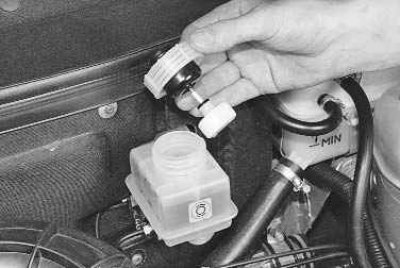
1. Turn away a reservoir cover of the main brake cylinder and wipe a float a pure rag. Be careful: brake fluid may drip from the float.
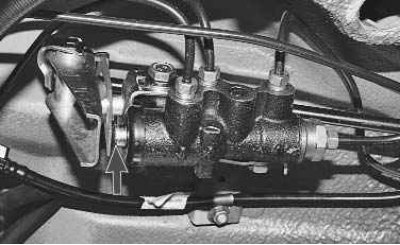
2. If the rear wheels are suspended, first unlock the rear brake pressure regulator by inserting a screwdriver between the plate and the piston. Don't forget to take it out when you're done.
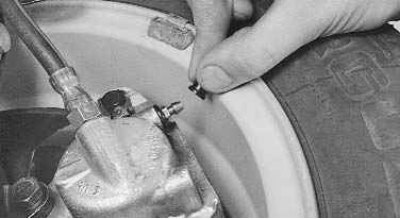
3. Clean the air release valve of the right rear brake mechanism from dirt. Remove the rubber protective cap from the valve.
4. Put on the rubber hose (it is recommended to use a transparent hose to see the condition of the fluid flowing out) on the valve fitting and immerse the end of the hose in a clean, transparent container.
5. The assistant should sharply press the brake pedal 4-5 times (with an interval of 1–2 s between pressing). After the last stroke, keep the pedal depressed.
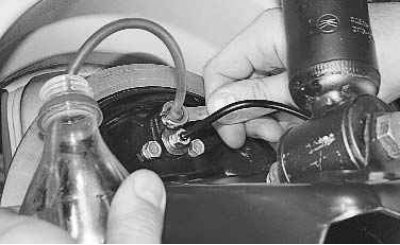
6. Loosen the air release valve 1/2-3/4 turn. The old one will start to flow out of the hose (dirty) brake fluid. In this case, the brake pedal should smoothly reach the stop. As soon as the fluid stops flowing, close the air release valve.
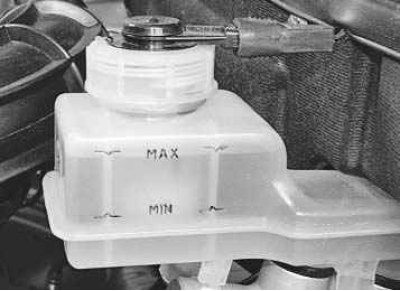
7. Constantly monitor the liquid level in the tank, preventing it from falling below the mark «MIN», and add new brake fluid if necessary. Repeat steps 5 and 6 until new fluid flows out of the hose (pure) brake fluid.
8. In the same way, change the brake fluid in the left front brake mechanism, and then in the second circuit (first in the left rear brake, then in the right front).
9. Press several times a brake pedal. Pedal travel and resistance should be constant each time you press it. If these conditions are not met, it means that air has entered the brake system and it needs to be bled (see «Bleeding the hydraulic drive of the brake system»).
10. After changing the brake fluid, be sure to put on protective caps on the air release valves.
11. Add brake fluid to the reservoir up to the mark «MAX» and screw on the lid.
